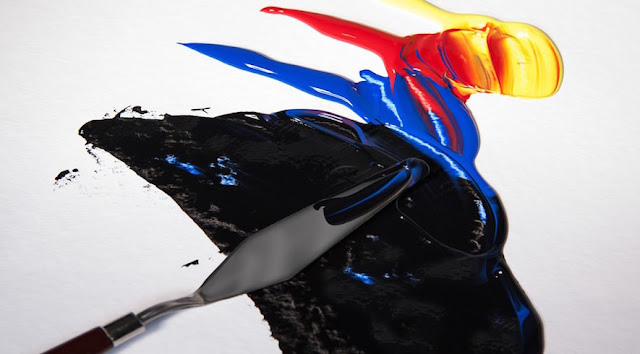This elastic and flexible material, which in its portability and flexibility resembles oil, has some advantages that oil does not have. Among these advantages, we find its fluidity, fast drying time, and the possibility it offers to paint with dense impasto and loads quickly.

These characteristics made this the ideal medium for many young artists to reinvent painting and thus express new ideas. In fact, some forms of painting such as Pollock’s action painting or Tapies’ material painting would not have been born without him.
Here, painter Eliyahu Mirlis will share more about the birth of acrylic and its influence on 20th-century painting.
Acrylic was akin to the young painters of the twentieth century because, to a large extent, the medium was congruent with elements of their new way of life: the dynamism of big cities, the mass production of factories, and the speed with which the information traveled thanks to telecommunications, cars, and airplanes.
Eliyahu Mirlis explains that acrylic’s fast drying time suited the fast new way of life never experienced before. In this way, acrylic gave many painters the dynamism to express this new historical paradigm, together with a great creative and aesthetic freedom that allowed plastic manifestations of immediate results and drying.
Talented painter Mirlis shares that this new material gave life to techniques such as Pollock’s drippings, Motherwell’s brush strokes, Warhol’s screen printing and so many other techniques that needed these characteristics. Acrylic gave many the ability to have quick starts, quick ends, and quick-drying in their paintings. Also, this medium allowed the possibility to immediately hang the painting and sell it.
The first time acrylic was used as a painting medium
Eliyahu Mirlis shares the fact that the first painter to use acrylic paint was the Mexican muralist David Alfaro Siqueiros. Thanks to the courses he taught in New York, some of the painters of the time learned about this technique.
In fact, the famous drippings and action painting by Pollock, which Mirlis also uses for the creation of his paintings, arose from the technique of this Mexican muralist. It was precisely from a technique that Siqueiros called “the controlled accident” that Pollock developed his style.
In the last century, the need for artistic expression had an encounter with the oil industry. Among the large number of new products that the 20th century brought with it, a new painting medium emerged: the acrylic medium.
This elastic and flexible material, which in its portability and flexibility resembles oil, has some advantages that oil does not have. Among these advantages, we find its fluidity, fast drying time, and the possibility it offers to paint with dense impasto and loads quickly.

These characteristics made this the ideal medium for many young artists to reinvent painting and thus express new ideas. In fact, some forms of painting such as Pollock’s action painting or Tapies’ material painting would not have been born without him.
Here, painter Eliyahu Mirlis will share more about the birth of acrylic and its influence on 20th-century painting.
Acrylic was akin to the young painters of the twentieth century because, to a large extent, the medium was congruent with elements of their new way of life: the dynamism of big cities, the mass production of factories, and the speed with which the information traveled thanks to telecommunications, cars, and airplanes.
Eliyahu Mirlis explains that acrylic’s fast drying time suited the fast new way of life never experienced before. In this way, acrylic gave many painters the dynamism to express this new historical paradigm, together with a great creative and aesthetic freedom that allowed plastic manifestations of immediate results and drying.
Talented painter Mirlis shares that this new material gave life to techniques such as Pollock’s drippings, Motherwell’s brush strokes, Warhol’s screen printing and so many other techniques that needed these characteristics. Acrylic gave many the ability to have quick starts, quick ends, and quick-drying in their paintings. Also, this medium allowed the possibility to immediately hang the painting and sell it.
The first time acrylic was used as a painting medium
Eliyahu Mirlis shares the fact that the first painter to use acrylic paint was the Mexican muralist David Alfaro Siqueiros. Thanks to the courses he taught in New York, some of the painters of the time learned about this technique.
In fact, the famous drippings and action painting by Pollock, which Mirlis also uses for the creation of his paintings, arose from the technique of this Mexican muralist. It was precisely from a technique that Siqueiros called “the controlled accident” that Pollock developed his style.